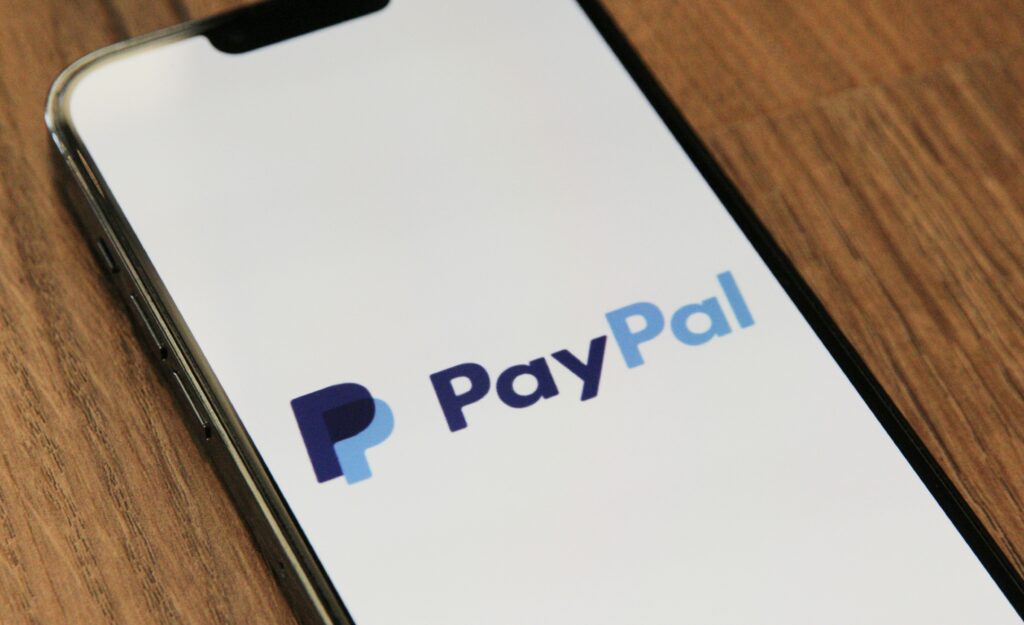The financial world watched in disbelief as FTX founder Sam Bankman-Fried, a 31-year-old billionaire, went from crypto’s golden boy to a defendant in one of the most notable financial fraud trials in recent history.
The shockwaves felt across New York’s courtrooms, where federal prosecutors laid bare allegations of a Ponzi-like scheme, have stirred a global conversation about the stability and security of financial systems—both emerging and established.
Yet, as the gavel awaits its final say in Manhattan federal court, the crypto markets stand surprisingly undeterred, showcasing a resilience that defies past precedents like the infamous Mt. Gox implosion.
This shift towards resilience marks a maturation of the crypto industry, hinting at a future where digital currencies are recognized not as speculative novelties, but as legitimate value-asset classes.
But the echoes of financial institutions’ failures, including the recent tremor from Citizens Bank’s fall, remind us that crashes know no bounds, sparing neither the digital nor the traditional.
The Sam Bankman-Fried and FTX Saga
A succinct breakdown of Sam Bankman-Fried and FTX, from inception to now.
The Rise of FTX
- Founded by Sam Bankman-Fried, a former Wall Street trader and MIT graduate, FTX quickly rose to prominence in the cryptocurrency exchange arena.
- FTX was known for innovative products, user-friendly interface, and aggressive marketing tactics that appealed to both seasoned traders and new entrants.
The Unraveling
- Allegations emerged that FTX had been using customer funds to bail out Alameda Research, a trading firm also founded by Mr. Bankman-Fried.
- The intertwining of FTX and Alameda Research’s finances raised alarm bells, pointing to a lack of corporate governance and oversight.
The Domino Effect
- As details of mismanaged funds came to light, customer trust eroded, leading to a liquidity crisis and a subsequent bank run on the exchange.
- FTX’s collapse was not isolated; it reverberated throughout the crypto industry, impacting lenders and investors worldwide.
Key Players in the Trial
- Sam Bankman-Fried: The central figure, facing multiple charges including wire fraud and money laundering.
- Caroline Ellison: CEO of Alameda Research, played a pivotal role in the relationship between FTX and Alameda.
- Gary Wang: FTX co-founder, implicated in the misuse of customer money alongside Bankman-Fried.
- Nishad Singh: A former FTX founder and Director of Engineering, who wrote software code that allegedly allowed for the diversion of customer funds. Singh has pleaded guilty to multiple charges and is cooperating with prosecutors.
- Ryan Salame: Former chief executive of FTX, who has pleaded guilty to campaign finance law violation and operating an unlicensed money-transmitting business. He admitted to making illegal political donations at the direction of Bankman-Fried.
The Legal Proceedings
- The trial, overseen by Judge Lewis Kaplan in the Southern District of New York City, has captured extensive media attention and sparked discussions about regulatory oversight in the crypto industry.
- Federal prosecutors have presented a case that paints a picture of deliberate and systemic misuse of customer funds.
- Sam Bankman-Fried’s bail was set to $250 million and his lawyer is Mark Cohen.
- The jury’s decision found him guilty on all criminal charges; Sam Bankman-Fried faces the maximum sentence of 110 years in prison (which is less than that of Bernie Madoff).
Implications for FTX Customers
- Many FTX customers were left in limbo, with frozen assets and little information on the recovery of their funds.
- The Sam Bankman-Fried trial’s outcome is crucial for customers seeking restitution and for the broader crypto market’s efforts to rebuild trust.
The Cryptocurrency Industry’s Response
- Contrary to expectations, the crypto industry has shown a robust response to the FTX crisis, with other exchanges and companies stepping up to reassure customers and tighten security measures.
- The incident has spurred a push for better regulatory frameworks to protect consumers and prevent similar disasters in the future.
The Cryptocurrency Climate Post-Trial
The verdict of Sam Bankman-Fried’s high-profile trial reverberated throughout the financial world, yet the anticipated turmoil within the cryptocurrency markets did not materialize.
Instead, a commendable resilience was on display as the major cryptocurrencies managed to hold their ground. This unexpected steadiness suggests a maturing market less susceptible to single events, regardless of their magnitude.
Exchanges and other crypto businesses have swiftly taken steps to reassure their customers by reinforcing security measures and affirming their operational integrity. This proactive stance has been pivotal in maintaining the sector’s stability and in starting to rebuild the trust that was shaken by the crypto exchange FTX collapse.
Cryptocurrency investors appear to have learned from the past. Their measured response to the FTX trial outcomes reflects a deeper understanding of the market’s intricacies and a more calculated approach to investment, favoring due diligence over the frenzied speculation of earlier years.
The narrative surrounding cryptocurrencies is undergoing a transformation, with a shift from a focus on high-risk, high-reward investment opportunities to a more nuanced view that includes considerations of regulatory compliance, security, and long-term viability.
These emerging narratives are setting the stage for cryptocurrencies to be integrated into the mainstream financial fabric with greater legitimacy and stability.
Securing your crypto exchange is easy with DPN.
Historical Echoes – Mt. Gox and the Shadow of Instability
The tale of Mt. Gox remains a significant chapter in the history of cryptocurrency, serving as a cautionary tale of what can go wrong in the digital financial realm.
In 2014, the exchange’s implosion was marked by the astonishing disappearance of 850,000 Bitcoins, shaking the very foundation of investor confidence in the burgeoning market.
This crisis catalyzed a much-needed evolution in security protocols across the industry, leading to the widespread adoption of enhanced measures such as cold storage and multi-signature wallets, aiming to forestall a recurrence of such a catastrophic event.
The aftermath of the Mt. Gox debacle underscored the need for more stringent regulatory oversight, a lesson that resonates with the more recent FTX crisis. Yet, the market’s response to the FTX collapse starkly contrasts with the past, showing signs of a market that has grown in resilience and sophistication.
Unlike the panic and turmoil that followed Mt. Gox, the FTX situation did not precipitate a market-wide crisis, suggesting that the cryptocurrency ecosystem has developed a stronger immune system against individual failures.
Since Mt. Gox, regulators worldwide have grappled with the task of framing rules to govern the complex world of cryptocurrencies. These efforts have gradually led to a more robust framework that strives to protect investors and stabilize the market.
Traditional Banking Shakeups: Citizens Bank and FDIC Interventions
The collapse of Citizens Bank serves as a poignant reminder that financial instability is an industry-agnostic specter, lurking in the corridors of both modern and traditional financial institutions.
As a stark example of the vulnerabilities inherent in the traditional banking system, the failure of Citizens Bank underscores the reality that no financial structure is immune to the risk of collapse.
In the event of such failures, the FDIC steps in as a guardian of depositors’ interests, ensuring that the upheaval is contained and the fallout is minimized. The intervention by the FDIC in the case of Citizens Bank illustrated the protective measures that are in place to shield the economy from the potential domino effect of a bank’s downfall.
It’s amazing how little coverage Citizens Bank received for going bankrupt, yet FTX is shown across all news sources daily.
Comparing Crypto and Traditional Bank Failures
This contrast becomes particularly pronounced when juxtaposed with the crypto industry, which lacks a direct equivalent of the FDIC.
However, the crypto sector has begun to explore mechanisms of protection, including insurance for digital assets, which shows a burgeoning maturity and a move towards mirroring the safety nets found in traditional finance.
Each failure of a financial institution, like Citizens Bank, offers crucial insights that can be used to fortify the financial system. The FDIC not only provides a safety net but also serves as a crucial institution for learning and adapting to better prevent future collapses.
The impact of a bank’s collapse can extend beyond immediate financial losses, potentially leading to more stringent lending conditions and a subsequent economic slowdown.
Strengthening the Traditional Banking System
In response, there are continuous efforts to bolster the resilience of the banking system, such as through stress testing and maintaining adequate capital reserves. These measures are vital for ensuring that traditional banking remains a bulwark of economic stability, even as it faces challenges both old and new.
The story of Citizens Bank’s failure and the subsequent FDIC intervention is a narrative that resonates with the broader theme of financial security. It draws attention to the ever-present need for vigilance and adaptation in safeguarding the interests of depositors and maintaining the overall health of the financial system.
No matter your bank, you need a backup. Let’s get started.
How to Ensure Funds Security in a Volatile Financial Landscape
Navigating the treacherous waters of today’s financial landscape demands a multifaceted strategy for securing one’s funds. Recognizing the inherent risks of both the crypto market and traditional banking is the foundational step in this endeavor.
Investors are called upon to diversify their portfolios, not just across different assets, but also across institutions and asset classes, to dilute the impact of any one sector’s downturn. Due diligence becomes paramount; researching financial products, institutions, and the historical stability of investments is crucial before committing funds.
Security features should also be leveraged to their fullest—utilizing tools like two-factor authentication and fraud alerts can offer substantial protection against unauthorized access and potential loss.
Insurance plays a pivotal role as a safety net, too, providing a buffer in the event of a financial breakdown. This is as true in the crypto space, with some platforms offering insurance on digital assets, as it is in traditional banking, where deposit insurance is well-established.
Preparing for market volatility is another critical aspect of securing funds. Having a clear plan for accessing funds and maintaining a portion in liquid, easily accessible forms can prevent being caught in a financial squeeze during market crashes.
Let’s Future-Proof Your Business
The trials and tribulations of Sam Bankman-Fried and cryptocurrency exchange FTX, set against the historical backdrop of traditional banking failures, have provided us with invaluable lessons.
These episodes have taught us that the responsibility for financial security doesn’t rest solely with institutions — it is also in the hands of each business owner, investor, trader, and consumer.
In the spirit of fostering a safer financial future, it’s essential to partner with payment platforms that prioritize security and reliability. For businesses looking to navigate these turbulent waters, opening a merchant account with DirectPayNet is a step towards bolstering your financial defenses.
DirectPayNet offers specialized merchant services that cater to the unique needs of your business while emphasizing security and fraud prevention.
DON’T WAIT FOR THE NEXT FINANCIAL UPHEAVAL TO SECURE YOUR BUSINESS TRANSACTIONS







